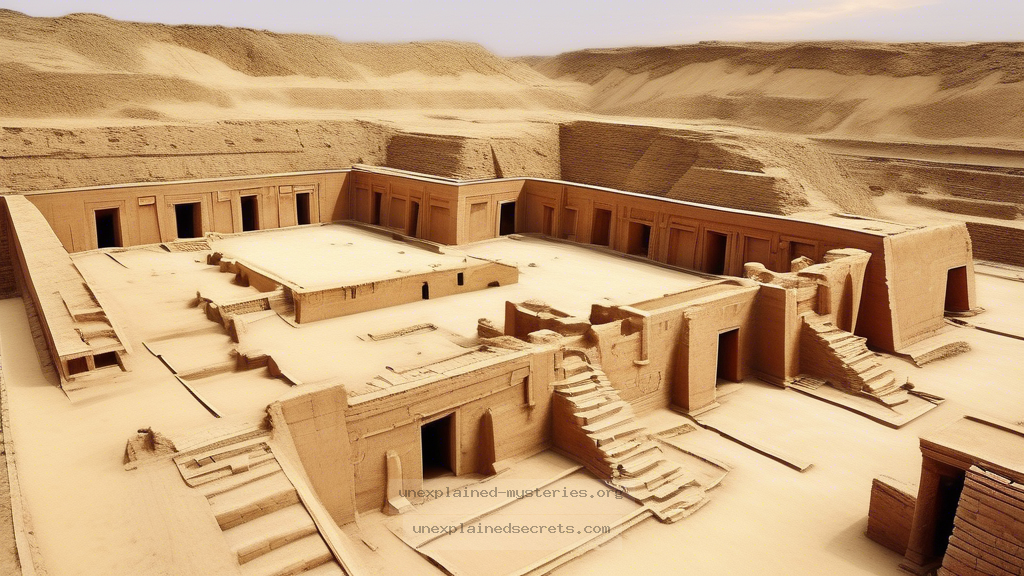What Happened to the Advanced Civilization of the Indus Valley, and Why Did It Disappear?
What Happened to the Advanced Civilization of the Indus Valley, and Why Did It Disappear?
The mystery surrounding the disappearance of the Indus Valley Civilization (IVC), one of the world’s earliest urban cultures, invites both intrigue and speculation. Flourishing from approximately 3300 BCE to 1300 BCE, this civilization was known for its advanced urban planning, sophisticated architecture, and remarkable trade networks. However, by around 1900 BCE, the cities of the Indus Valley were largely abandoned, leading historians and archaeologists to ask: what caused the decline of this once-thriving civilization? Understanding this question matters deeply, as it impacts our knowledge of human resilience, adaptation, and the consequences of environmental and societal changes.
Historical Context of the Indus Valley Civilization
The Indus Valley Civilization, also known as the Harappan Civilization, spanned modern-day Pakistan and northwest India. It was one of the world’s earliest urban cultures, alongside Mesopotamia and Ancient Egypt. The civilization is renowned for its well-planned cities, such as Harappa and Mohenjo-Daro, which featured advanced drainage systems, grid-pattern streets, and impressive public baths. The civilization’s peak occurred around 2500 BCE, when it is estimated to have had a population of over five million people.
One of the key features of IVC was its economy, which relied heavily on agriculture, trade, and crafts. Evidence shows that the people cultivated wheat, barley, and cotton, and engaged in trade with neighboring civilizations, including Mesopotamia. The existence of standardized weights and measures indicates a sophisticated economic system, while artifacts such as seals suggest a complex bureaucratic structure. By the end of the Bronze Age, however, this civilization began to decline, leaving behind a rich but enigmatic legacy.
Core Theories Behind the Decline
The decline of the Indus Valley Civilization remains a topic of considerable debate among scholars. Several theories have been proposed to explain the sudden disappearance of this advanced culture. Here are some of the leading hypotheses:
- Climate Change: Many researchers suggest that significant climatic changes, including prolonged droughts and shifting monsoon patterns, may have devastated agriculture and water supply.
- River Dynamics: The Indus River is known for its unpredictable behavior. Changes in river courses could have disrupted irrigation and trade routes, leading to food shortages.
- Invasion and Conflict: Some historians posit that invasions by nomadic tribes or internal conflicts could have led to the civilization’s downfall, although archaeological evidence for widespread violence remains sparse.
- Economic Decline: A decline in trade and economic stability, possibly due to external factors like trade route disruptions, could have precipitated the civilization’s collapse.
Practical Implications and Evidence
Understanding the decline of the Indus Valley Civilization has significant implications for contemporary society. The lessons learned regarding environmental management, resource allocation, and social organization can inform current and future civilizations facing similar challenges. Research undertaken at key archaeological sites has provided valuable insights into the daily lives, economic practices, and social structures of the Harappans.
For instance, excavations at Mohenjo-Daro revealed a complex urban layout with advanced public sanitation systems, suggesting a high level of civic planning. Studies of agricultural practices indicate that the inhabitants relied on crop diversification, which may have contributed to their initial success. However, as climate conditions worsened, the reliance on certain crops may have rendered them vulnerable to famine.
Alternative Perspectives on the Civilization’s Disappearance
While the aforementioned theories are widely discussed, alternative perspectives also exist. Some scholars argue that rather than a sudden collapse, the decline of the Indus Valley Civilization may have been a gradual process of transformation. This perspective posits that instead of a mass exodus, the population may have migrated to surrounding areas while maintaining cultural practices.
Additionally, recent studies have suggested that the people of the Indus Valley did not entirely vanish. Evidence of continuity in culture, language, and agriculture in subsequent societies indicates that aspects of the Harappan way of life persisted in various forms. This continuity challenges the narrative of a complete societal collapse and opens up discussions about resilience and adaptation.
Common Misconceptions About the Indus Valley Civilization
Despite extensive research, numerous misconceptions about the Indus Valley Civilization persist. Here are a few clarifications:
- Misconception: The IVC was entirely peaceful. While the civilization is often characterized by its urban sophistication, evidence of conflict, such as fortified structures, suggests that it was not free from violence.
- Misconception: The Harappans were a homogenous culture. In reality, the civilization was likely composed of diverse ethnic groups and communities, which contributed to its richness and complexity.
- Misconception: The civilization disappeared overnight. The decline was likely gradual, with many factors contributing to changes in the population and urban centers.
Best Practices for Investigating Lost Civilizations
Researchers studying lost civilizations like the Indus Valley must adopt multidisciplinary approaches to uncover the complexities of these ancient societies. Here are some best practices for investigation:
- Archaeological Excavation: Systematic excavations at known sites can yield artifacts and structures that provide insights into daily life and governance.
- Interdisciplinary Collaboration: Combining expertise from archaeology, anthropology, geology, and climate science can lead to a more holistic understanding of the factors influencing societal changes.
- Utilization of Technology: Employing modern technologies such as ground-penetrating radar and satellite imagery can help uncover hidden structures and settlement patterns.
Future Developments in Research
The study of the Indus Valley Civilization is ever-evolving, with ongoing excavations and research initiatives shedding new light on this enigmatic culture. Advances in technology, including DNA analysis and isotopic studies, are providing fresh insights into agricultural practices, trade routes, and population dynamics.
Moreover, interdisciplinary research is increasingly recognized as vital for unraveling the complexities of ancient societies. As climate change continues to pose significant challenges globally, the lessons learned from the IVC’s adaptation and eventual decline may offer crucial insights into resilience and sustainability for contemporary societies.
Conclusion: The Legacy of the Indus Valley Civilization
The mystery of the Indus Valley Civilization’s decline serves as a poignant reminder of the fragility of advanced societies in the face of environmental and social change. While various theories attempt to explain this disappearance, ongoing research continues to uncover the nuances of this remarkable civilization. From climate change to economic shifts, the factors leading to its decline are complex and multifaceted. By exploring these ancient mysteries, we not only gain insight into the past but also learn valuable lessons for the future. 🌍
Other Articles
Recent Posts
- What Happened to Flight MH370? The Conspiracy Theories That Still Haunt Us
- What Secrets Lurk Within the Walls of the Infamous Trans-Allegheny Lunatic Asylum?
- What Evidence Supports the Existence of Bigfoot in the Pacific Northwest?
- What Happened to the Indus Valley Civilization? Unraveling the Mysteries of Ancient Urban Life
- Can Telepathy Be Scientifically Proven Through Laboratory Evidence?







